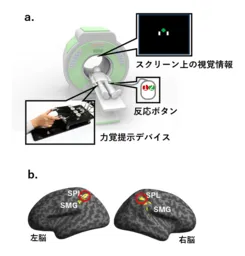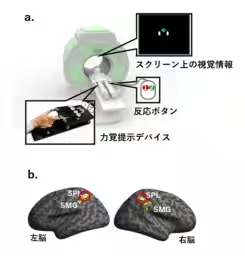

New Insights into How Our Brain Integrates Touch and Visual Information for Grasping Objects
Understanding Brain Integration of Touch and Vision
Recent groundbreaking research has identified key brain mechanisms involved in how tactile and visual information are integrated when we grasp objects. Conducted by the National Institute of Information and Communications Technology (NICT) in collaboration with various research institutes, the study has revealed new insights into the active touch perception process.
The research focuses on a phenomenon known as 'active touch', where users instinctively evaluate an object's texture and stiffness through their fingers. Utilizing functional Magnetic Resonance Imaging (fMRI), researchers have managed to pinpoint the unique brain mechanisms that unify tactile feedback—derived from finger movements—and corresponding visual cues, marking the first such discovery globally.
Mechanisms Revealed Through Innovative Technology
The study employed a specially developed tactile feedback device compatible with high magnetic fields to ensure that tactile and visual data are processed independently during tests. This technological advancement enabled researchers to manipulate sensory presentations effectively, leading to a deeper comprehension of the brain networks responsible for sensing inconsistencies or consistencies between different sensory modalities.
During the experiments, participants were instructed to grip a plate of the tactile feedback device with their thumb and forefinger. As they executed this action, they simultaneously observed visual indicators representing finger movements. Results indicated that perceptions of 'stiffness' were influenced not just by tactile feedback but also by visual input, demonstrating a sophisticated blend of sensory processing.
Additional Findings and Implications
In the first phase of the experiments, brain regions that showed heightened activity when both visual and tactile inputs were presented together were identified. This suggests that these areas play a role in integrating visual and tactile processing. Furthermore, a second experiment highlighted that brain activity surged when visual and tactile stimuli were congruent rather than conflicting.
Using Dynamic Causal Modeling (DCM), researchers also explored connections between different active brain regions. They found evidence supporting that brain areas responsible for processing visual and tactile coherence (MCC) send information to areas focused on tactile feedback (S1, PO), indicating a two-way flow of information that can influence sensory processing.
Future Outlook and Applications
The revelations concerning the brain's methods of integrating sensory input have vast implications for the development of efficient and effective XR (Extended Reality) and AI technologies. Specifically, understanding how the brain processes these multi-sensory experiences may enhance the realism and agency people feel in XR environments. For instance, even if tactile feedback is minimal, visual cues could suffice, thus minimizing costs associated with providing sensory experiences in virtual settings.
Moreover, such insights could pave the way for the development of multi-modal AI technology that empathizes and cooperates with humans more intuitively. As we continue to unravel the brain's integration mechanisms, it is anticipated that further advancements in XR and AI, bolstered by a nuanced understanding of sensory processing, will follow.
The study’s findings will be published online in the journal Imaging Neuroscience on March 5, 2025, providing further details to the scientific community and beyond. Research team members included Juan Liu, Akiko Callan, Atsushi Wada, and Hiroshi Ando, contributing their combined expertise from NICT’s Universal Communication Research Institute and the Future ICT Research Institute's Brain-to-Brain Communication Research Center.
The research not only underscores the significance of multi-sensory integration in human cognition but also presents promising avenues for practical applications in technology that can lead to improved interaction and experiences for users in various fields.



Topics Consumer Technology)










【About Using Articles】
You can freely use the title and article content by linking to the page where the article is posted.
※ Images cannot be used.
【About Links】
Links are free to use.